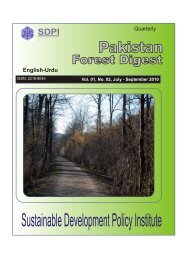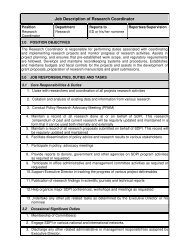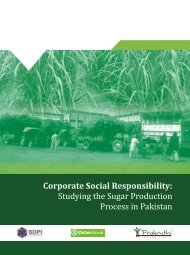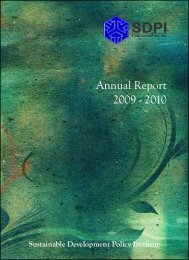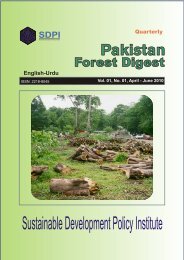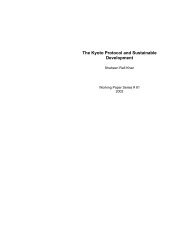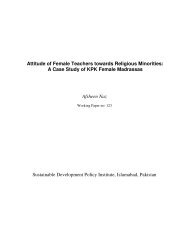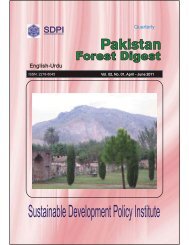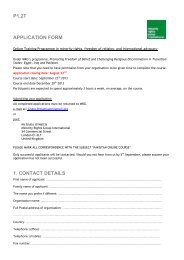Bangladesh - Grameen: Village Phone Project - Sustainable ...
Bangladesh - Grameen: Village Phone Project - Sustainable ...
Bangladesh - Grameen: Village Phone Project - Sustainable ...
You also want an ePaper? Increase the reach of your titles
YUMPU automatically turns print PDFs into web optimized ePapers that Google loves.
<strong>Bangladesh</strong><br />
<strong>Grameen</strong>: <strong>Village</strong> <strong>Phone</strong> <strong>Project</strong><br />
Winner of the GSM in the Community Award at the global GSM Congress (2000)<br />
Winner of the Economic Development Award (2004) , The Tech Museum Laureats i .<br />
No ICTs led development success story is complete without mentioning the <strong>Grameen</strong> Bank’s (Now a part<br />
of the larger <strong>Grameen</strong> Foundation enterprise) Microfinance and <strong>Village</strong> <strong>Phone</strong> Programme in <strong>Bangladesh</strong>.<br />
<strong>Grameen</strong> Bank was founded in 1976 in Chittagong, <strong>Bangladesh</strong>, by Dr. Muhammad Yunus, a Nobel<br />
Peace Prize Winner and renowned economist. The Banks primary business is to make small loans<br />
(Average USD 160) to finance entrepreneurial ventures and the cottage industry, mostly to rural women.<br />
Over the years the Bank has established 2,468 branches covering more than 80,000 ii villages of<br />
<strong>Bangladesh</strong>. In 1994, a US based native <strong>Bangladesh</strong>i entrepreneur named Iqbal Quadir approached the<br />
bank to use its micro credit mechanism to establish a nationwide telecommunication network to serve the<br />
rural areas. Quadir’s idea was based on the premise that in developing countries access to communication<br />
service is extremely challenging for the rural poor. The governments and industries have little incentive to<br />
invest in the high cost infrastructure to serve the unprofitable rural areas. As a result, millions live without<br />
the ability to contact people beyond their local villages. <strong>Bangladesh</strong> served as an ideal test case as, in<br />
1994, 97 % of the households were without telephone access. It was not uncommon for villagers to travel<br />
for two days to make a phone call. In 1997, due to telecommunication liberalization policy by the<br />
Government of <strong>Bangladesh</strong>, <strong>Grameen</strong> Bank, along with Quadir’s US Based company Gonophpone and<br />
Norway’s telecommunication giant Telenor, won a cell phone license as a for profit entity called<br />
<strong>Grameen</strong> <strong>Phone</strong> Limited (GP). <strong>Village</strong> <strong>Phone</strong> (VP) idea was instantly born in the shape of <strong>Grameen</strong><br />
Telecommunication, which is not for profit concern and holds 35% shares of the <strong>Grameen</strong> <strong>Phone</strong>,<br />
wherein <strong>Grameen</strong> Bank’s micro credit clients, mostly women (123,790 men vs. 2,246,340 women) iii ,<br />
were given loans for the purchase of a Global System Mobile (GSM) phone to launch their own public<br />
phone business, thereby earning enough revenue to repay the loans taken from the <strong>Grameen</strong> Bank.<br />
To become <strong>Village</strong> <strong>Phone</strong> operators, prospective operators have to be a <strong>Grameen</strong> Bank member for the<br />
last two years, possess a record of timely repayment, have a house that is centrally located and have<br />
electricity at home to recharge the cell phone batteries. Air time is provided at a subsidized rate as<br />
<strong>Grameen</strong> Telecommunication buys airtime in bulk from sister concern <strong>Grameen</strong> <strong>Phone</strong>, but the operators<br />
are allowed to set their own market rates for selling the product, however GT provides a standard rate<br />
guide so the operators do not price themselves out of the market. If an operator charges significantly more<br />
than the market rate than the GT may put in another competitor to reduce rates. GT also runs a support<br />
system, where in it tracks the business pattern of the operators and offers training assistance wherever it<br />
feels lack of business skill is hampering progress.
‘According to Bayes et. al. (1999), phone-owning households were confirmed to be poorer than the<br />
villagers in general, regardless of whether land ownership or per capita income was used as a measure.<br />
The income derived from the VP was reported to be about 24% of the household income on average; in<br />
some cases, it was as high as 40%.On average, the VP operator earns an income of 14,400 Taka or<br />
roughly $300 USD per year from providing telephone services. This exceeds the average per capita<br />
income of <strong>Bangladesh</strong> ($286 USD) by $14 USD’. Bayes et. Al. (1999) also studied the pattern of callers.<br />
Most of the callers had relatives abroad and consequently 86 % of calls were made to discuss remittance<br />
issues and social calls. Only 8 % of the calls were made for business, which was a disappointment for the<br />
project managers as they expected the VP to generate business, however, as per Bayes (1999) the value of<br />
social calls in terms of quality of life is immeasurable.<br />
Many studies have been conducted to find out the impact of VP on women. Gender issues in the <strong>Village</strong><br />
<strong>Phone</strong> programme of <strong>Grameen</strong> Telecom focused on the following types of questions:<br />
1. How does the VP enhance a woman’s condition in her household and her status in a village<br />
2. How does the VP differ from other <strong>Grameen</strong> Bank loans in terms of empowering women<br />
3. What impact does a VP have on a village woman’s daily routine<br />
4. Are there differences in usage patterns when the VP is operated by a man<br />
‘When a GTC <strong>Village</strong> <strong>Phone</strong> is placed in a woman’s home, there seems to be a good match between the<br />
technology and the times and places that are open and socially acceptable to women in rural <strong>Bangladesh</strong>.<br />
A portable phone can go where the <strong>Village</strong> <strong>Phone</strong> operator goes, or she can deliver it directly into the<br />
hands of another woman in the village. The VPs have created a “phone culture” among women by<br />
enabling them to have access to a communication tool that they might otherwise be culturally excluded<br />
form using. The <strong>Village</strong> <strong>Phone</strong> operators and female users have shown rural societies that women can<br />
easily gain the skills and capacity to run a VP and that women have just as many reasons to use<br />
telephones as do men. In rural <strong>Bangladesh</strong>, if the only phone locally available is in the hands of a male<br />
VP, or in a market-area PCO operated by a man, then the percentage of female users is likely to be small.<br />
Research showed sites where VPs were operated by men only 6.25% of <strong>Grameen</strong> Bank member phone<br />
users were recorded as women. In comparison, where the operators were female, 82% of the <strong>Grameen</strong><br />
Bank member phone users were recorded as women. The latter is, of course, expected given the high<br />
proportion of <strong>Grameen</strong> Bank members who are women, but this fact only highlights the differential<br />
access afforded by VPs operated by men. Surveys have found that the <strong>Village</strong> <strong>Phone</strong> Operators become<br />
socially empowered as they earn an income, gaining participation in family decisions in which, in rural<br />
<strong>Bangladesh</strong>i society, women usually have no say iv .<br />
The VP programme has enabled women to participate in generating income for the family in a less<br />
physically demanding way. The convenience has encouraged more women to take up VP phone operation<br />
as a profession. Being revenue earners for the household elevates their status within the house and enables<br />
them to participate in the decision making at home. A Canadian International
Development Agency (CIDA) commissioned study v in <strong>Bangladesh</strong> concluded that the <strong>Grameen</strong><br />
<strong>Village</strong> <strong>Phone</strong> program yields “significant positive social and economic impacts, including relatively<br />
large consumer surplus and immeasurable quality of life benefits.<br />
References :<br />
D. Richardson, R. Ramirez, and M. Haq "<strong>Village</strong> <strong>Phone</strong> Program in Rural <strong>Bangladesh</strong>: A Multimedia<br />
Case Study,"(TeleCommons Development Group, 2000).<br />
Bayes, A. (1999) "Telecom: Insight into a <strong>Grameen</strong> Bank initiative." The Daily Star, 4 April<br />
Bayes, A., von Braun, J. & Akhter, R. (1999) <strong>Village</strong> pay phones and poverty reduction:Insights from a<br />
<strong>Grameen</strong> Bank initiative in <strong>Bangladesh</strong>. Information and Communication Technologies and Economic<br />
Development. vol.8<br />
Nevin Cohen (2001) What Works : <strong>Grameen</strong> Telecom’s <strong>Village</strong> <strong>Phone</strong>s , A Digital Dividend Study by<br />
the World Resources Institute.<br />
<strong>Grameen</strong> Foundation USA (2005) <strong>Village</strong> <strong>Phone</strong> Replication Manual ‘Creating sustainable access to<br />
affordable telecommunications for the rural poor.<br />
Ryan Stanley (2005) <strong>Village</strong> <strong>Phone</strong> – A Tool for Empowerment, <strong>Grameen</strong> Foundation USA Publication<br />
Series<br />
http://www.grameenfoundation.org/ Acessed 07 th July 2009.<br />
i http://www.techawards.org/laureates/stories/index.phpid=77 , Accessed 07 th July 2009.<br />
ii "<strong>Grameen</strong> Bank At a Glance". <strong>Grameen</strong> Communications. October 2007<br />
iii iii D. Richardson, R. Ramirez, and M. Haq "<strong>Village</strong> <strong>Phone</strong> Program in Rural <strong>Bangladesh</strong>: A Multimedia Case<br />
Study,"<br />
(TeleCommons Development Group, 2000).<br />
iv World Resources Institute, 2002
v D. Richardson, R. Ramirez, and M. Haq "<strong>Village</strong> <strong>Phone</strong> Program in Rural <strong>Bangladesh</strong>: A Multimedia Case Study,"<br />
(TeleCommons Development Group, 2000).



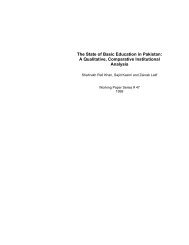
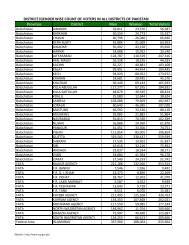
![(October - December, 2010) [13th SDC Special Bulletin]](https://img.yumpu.com/50118608/1/184x260/october-december-2010-13th-sdc-special-bulletin.jpg?quality=85)
